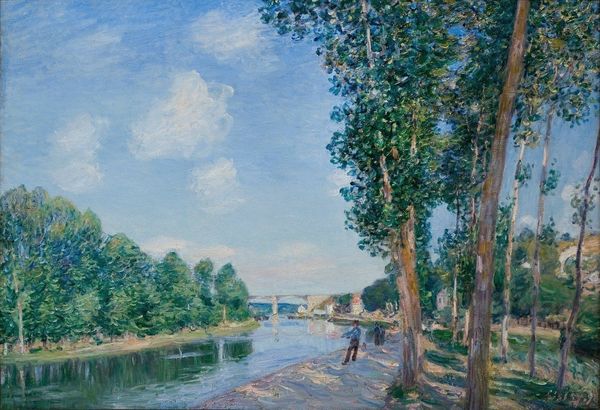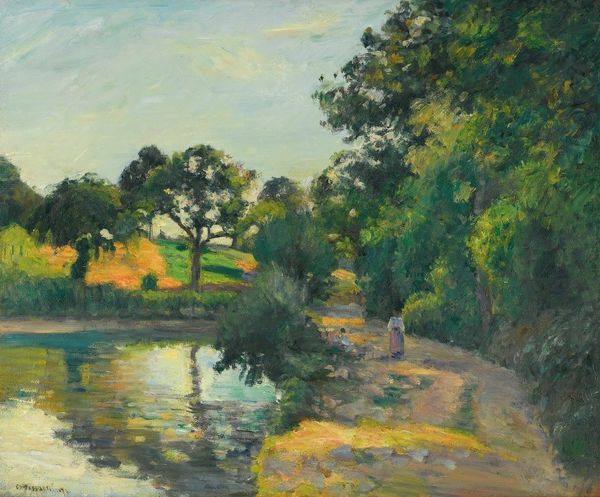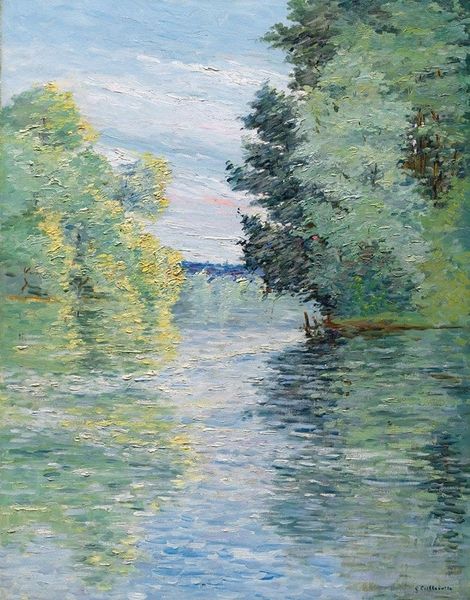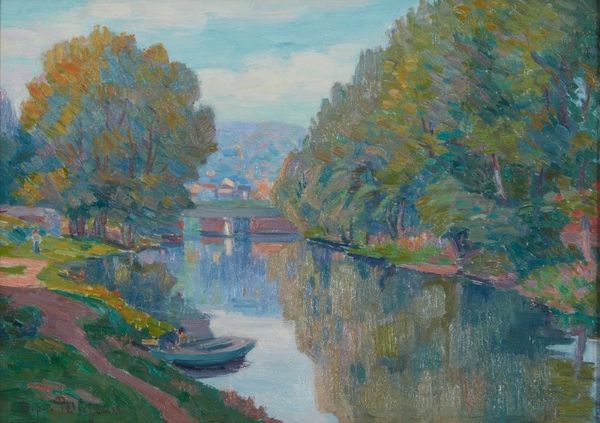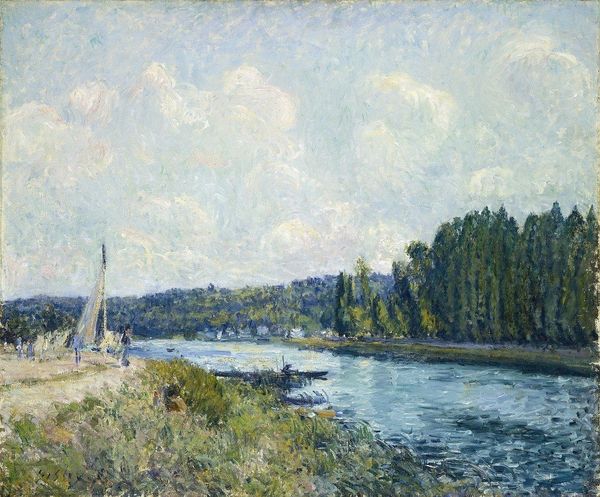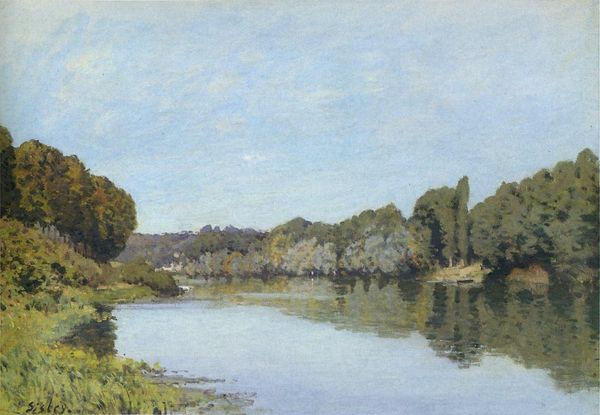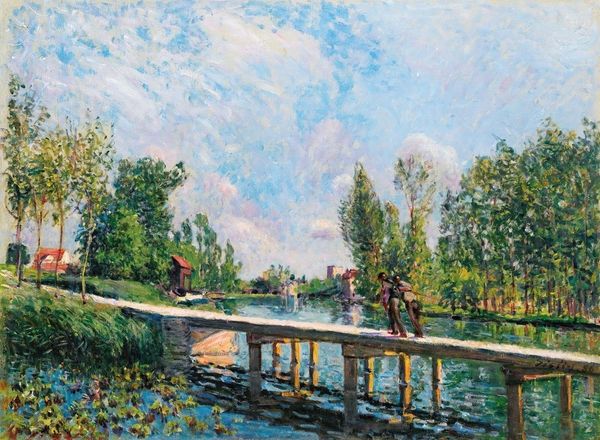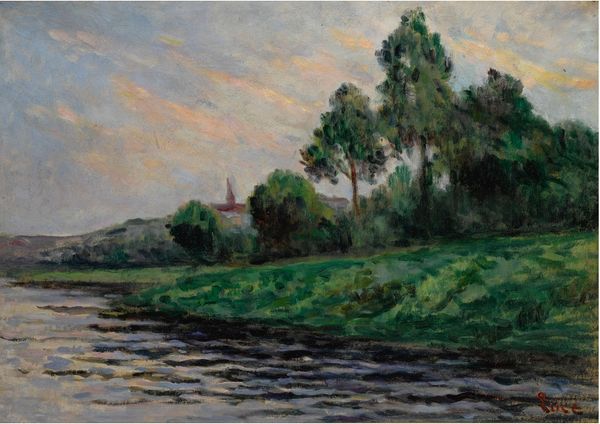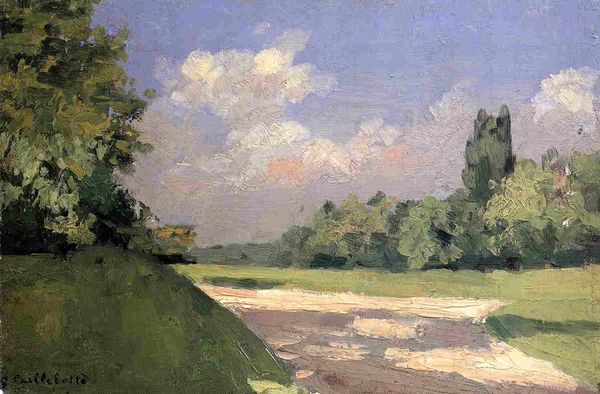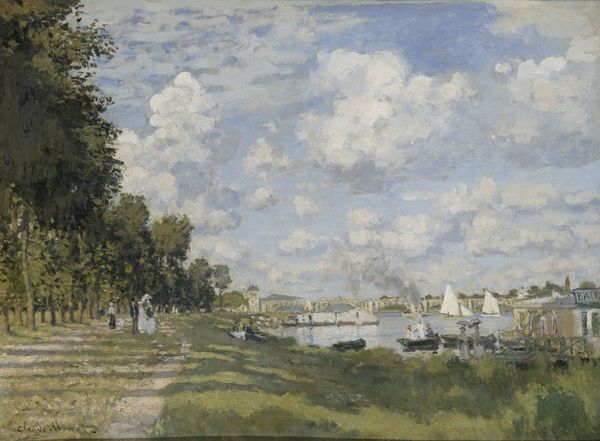
Copyright: Public Domain: Artvee
Curator: Looking at Alfred Sisley's "La Tamise Avec Hampton Church" from 1874, I’m immediately struck by its quiet serenity. There’s a hazy stillness to the water, the light on the sandy path… it's remarkably tranquil. Editor: Absolutely, the peacefulness is almost palpable. What draws me in is the raw materiality of the paint. You can practically feel the texture, the individual brushstrokes layering up to form the image. Sisley’s dedication to plein-air painting comes across clearly, as does the reality of labor that creates the artwork. Curator: The depiction of leisure and the rise of the middle class during the late 19th century in Britain comes to mind. Sisley captures the everyday lives of the rising urban professional. One might wonder if he received any patronage for this portrayal of society. Editor: Interesting to think about the social context. I also wonder about the specific pigments he employed here. The blues, the greens, the ochre—did he grind them himself, or did he rely on pre-mixed paints becoming increasingly available? That availability impacts the style and, frankly, his production capacity. Curator: It's tempting to get lost in the romance of it all, of course. The brushwork makes it very pretty but one could easily get lost. Art needs both beauty and criticality to endure through the sands of time and be culturally impactful to future generations. Editor: True. Beyond aesthetics, it is imperative that we engage critically with Sisley's decisions. What support structures were present in Impressionist art circles and how was this movement embraced and sustained? Curator: Looking back, this small view of London really does say so much more about the period and social impact art can have. Editor: Indeed, it reminds us of art's intricate relationship to society and economy. A truly invaluable view.
Comments
No comments
Be the first to comment and join the conversation on the ultimate creative platform.
